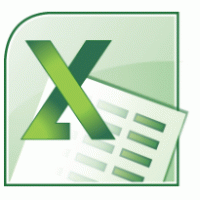 Back to jkp-ads.com |
Ron de Bruin
|
|
 Back to jkp-ads.com |
Ron de Bruin
|
|
Ron de Bruin decided to remove all Windows Excel content from his website for personal reasons. If you want to know why, head over to rondebruin.nl.
Luckily, Ron was kind enough to allow me to publish all of his Excel content here.
Most of these pages are slightly outdated and may contain links that don 't work. Please inform me if you find such an error and I'll try to fix it.
Kind regards
Jan Karel Pieterse
Important read this :
The code on this page is only working when you use Outlook as your mail
program.
Copy the code in a Standard module of your workbook, if you just
started with VBA see this page.
Where do I paste
the code that I find on the internet
Check out this Tip page for changing the code on this page.
Tips for changing the code examples
The following subroutine sends a small
text in an e-mail message.
Change the mail address and subject in the
macro before you run it.
Sub Mail_small_Text_Outlook() 'For Tips see: https://jkp-ads.com/rdb/win/winmail/Outlook/tips.htm 'Working in Office 2000-2016 Dim OutApp As Object Dim OutMail As Object Dim strbody As String Set OutApp = CreateObject("Outlook.Application") Set OutMail = OutApp.CreateItem(0) strbody = "Hi there" & vbNewLine & vbNewLine & _ "This is line 1" & vbNewLine & _ "This is line 2" & vbNewLine & _ "This is line 3" & vbNewLine & _ "This is line 4" On Error Resume Next With OutMail .To = "ron@debruin.nl" .CC = "" .BCC = "" .Subject = "This is the Subject line" .Body = strbody 'You can add a file like this '.Attachments.Add ("C:\test.txt") .Send 'or use .Display End With On Error GoTo 0 Set OutMail = Nothing Set OutApp = Nothing End Sub
The following subroutine sends the text
from a txt file in the body of the mail.
Change the mail address, subject
and path/name of the txt file in the macro before you run it.
I use
C:\test.txt in this example. Note: this example also use the GetBoiler
function,
you can find it below the macro. Copy this function also in
your standard module.
Sub Mail_Text_From_Txtfile_Outlook() 'For Tips see: https://jkp-ads.com/rdb/win/winmail/Outlook/tips.htm 'Working in Office 2000-2016 Dim OutApp As Object Dim OutMail As Object Set OutApp = CreateObject("Outlook.Application") Set OutMail = OutApp.CreateItem(0) On Error Resume Next With OutMail .To = "ron@debruin.nl" .CC = "" .BCC = "" .Subject = "This is the Subject line" .Body = GetBoiler("C:\test.txt") 'You can add a file like this '.Attachments.Add ("C:\test.txt") .Send 'or use .Display End With On Error GoTo 0 Set OutMail = Nothing Set OutApp = Nothing End Sub Function GetBoiler(ByVal sFile As String) As String 'Dick Kusleika Dim fso As Object Dim ts As Object Set fso = CreateObject("Scripting.FileSystemObject") Set ts = fso.GetFile(sFile).OpenAsTextStream(1, -2) GetBoiler = ts.readall ts.Close End Function
If you want to use the Intellisense help showing you the properties and
methods of the objects as you type you can use Early Binding.
Bit faster also when you run your code but you can have problems when you
distribute your workbooks. Excel will automatic update the reference number
to Outlook when you open your workbook in a higher version of Excel/Outlook
but not update it when you open it in a lower version of Excel/Outlook. With
Late Binding as I used in the macro examples you not have
this problem.
Add a reference to the Microsoft Outlook Library in
Excel
1) Go to the VBA editor with the shortcut
Alt - F11
2) Click on
Tools>References in the Menu bar
3) Place a
Checkmark before Microsoft Outlook ? Object Library
Where ? is the Outlook version number
Then replace
this three lines in the code
Dim OutApp As
Object
Dim OutMail As Object
Set OutMail = OutApp.CreateItem(0)
With this three lines
Dim OutApp As
Outlook.Application
Dim OutMail As Outlook.MailItem
Set OutMail =
OutApp.CreateItem(olMailItem)